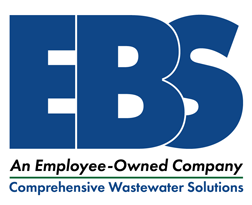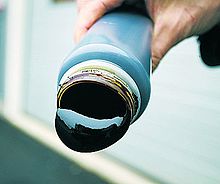In the Kraft paper-making process white liquor, which is NaOH (sodium hydroxide) and Na2S (sodium sulfide), is used to “cook” wood chips in a piece of equipment known as the digester. In the digester, the wood chips are “cooked” using high temperature and pressure in the presence of white liquor to create wood pulp. One of the byproducts of this process is a liquid that contains wood lignin, excess sodium, sulfur, and other organic materials. The liquid, referred to as black liquor, is sent through a series of evaporation processes to concentrate the solids, which are collected and sent to the recovery boiler where they are burned to produce steam and, eventually, power. Black liquor contains about 60 % to 65% organic solids that are easily burned for power production.
Black liquor is strongly caustic, releases hydrogen sulfide when interacting with acids, and contains concentrated organic content. For these reasons, black liquor spills into the wastewater treatment plant can throw the system into an upset. These accidental spills by nature are impossible to predict, however, there are multiple resources available to wastewater operators to maintain good treatment in the wastewater treatment plant such as pH adjustment, best-management practice ponds, and bioaugmentation.
The term bioaugmentation is defined as the application of selected microorganisms to enhance the microbial populations of an operating wastewater system to improve the water quality or lower the operating costs. Bioaugmentation products can provide additional bacteria immediately in response to an increase in loading rather than waiting for the system to both acclimate to the new food source and then grow to accommodate the higher loading. At EBS customer-specific formulations of bacteria, MicroStar and BioStar have been developed by the R&D team to achieve the high rates of degradation in heavily loaded wastewater systems. Also, EBS has patented a bacterial feed system to aid in the enumeration of the dry bioaugmentation product to provide maximum bacterial cells per pound of dry product. This unit, the BAC unit (Bacterial Acceleration Chamber), can grow up to 100X the number of bacteria of the dry product alone. The units are designed to be automatically or manually discharged into an aerated system. Using bioaugmentation via the BAC chamber in conjunction with other engineering controls for pH and temperature will allow a system to respond quicker to a high loading event and have more effective removal early in the system avoiding potential BOD breakthrough to the effluent.

